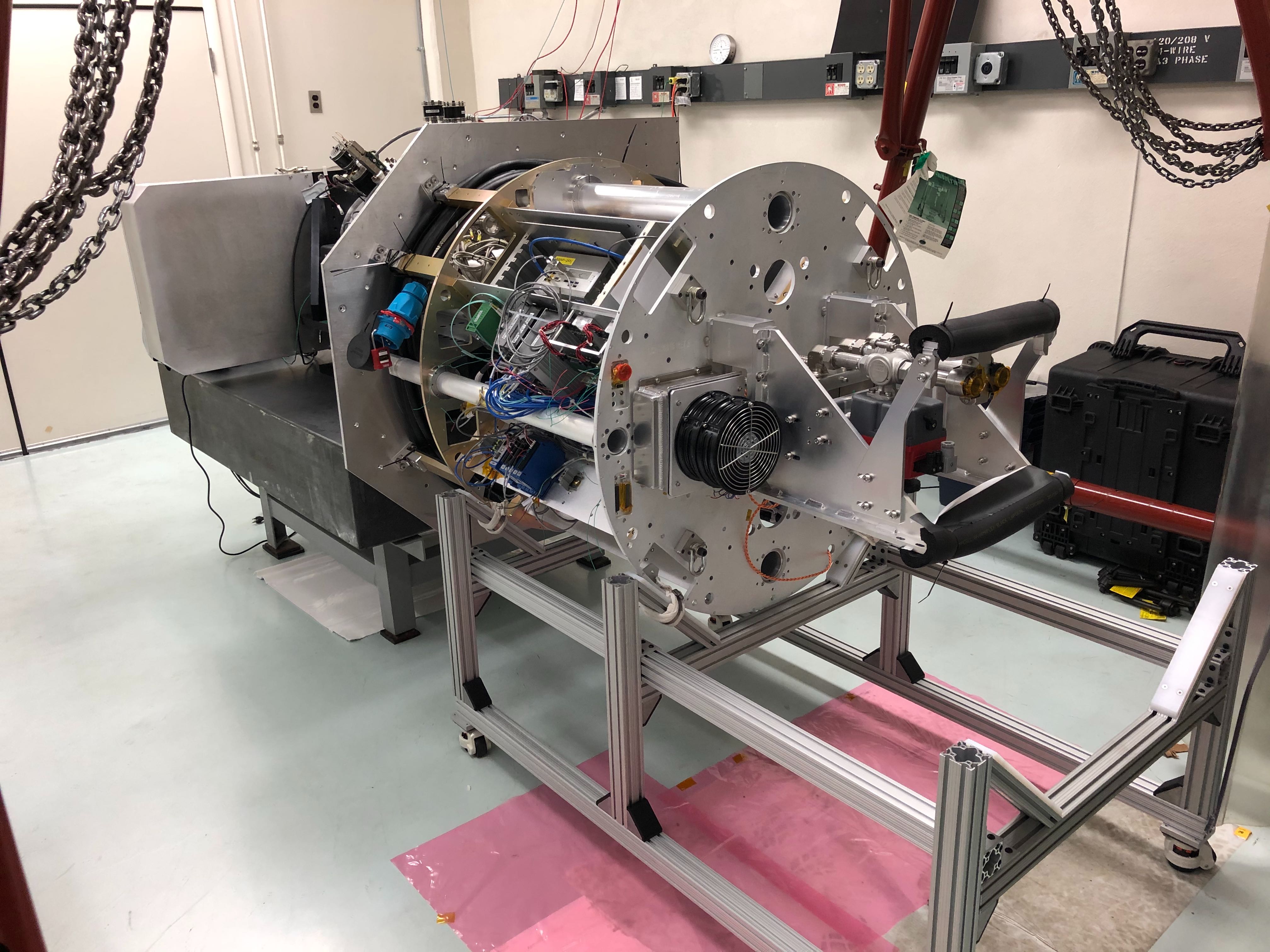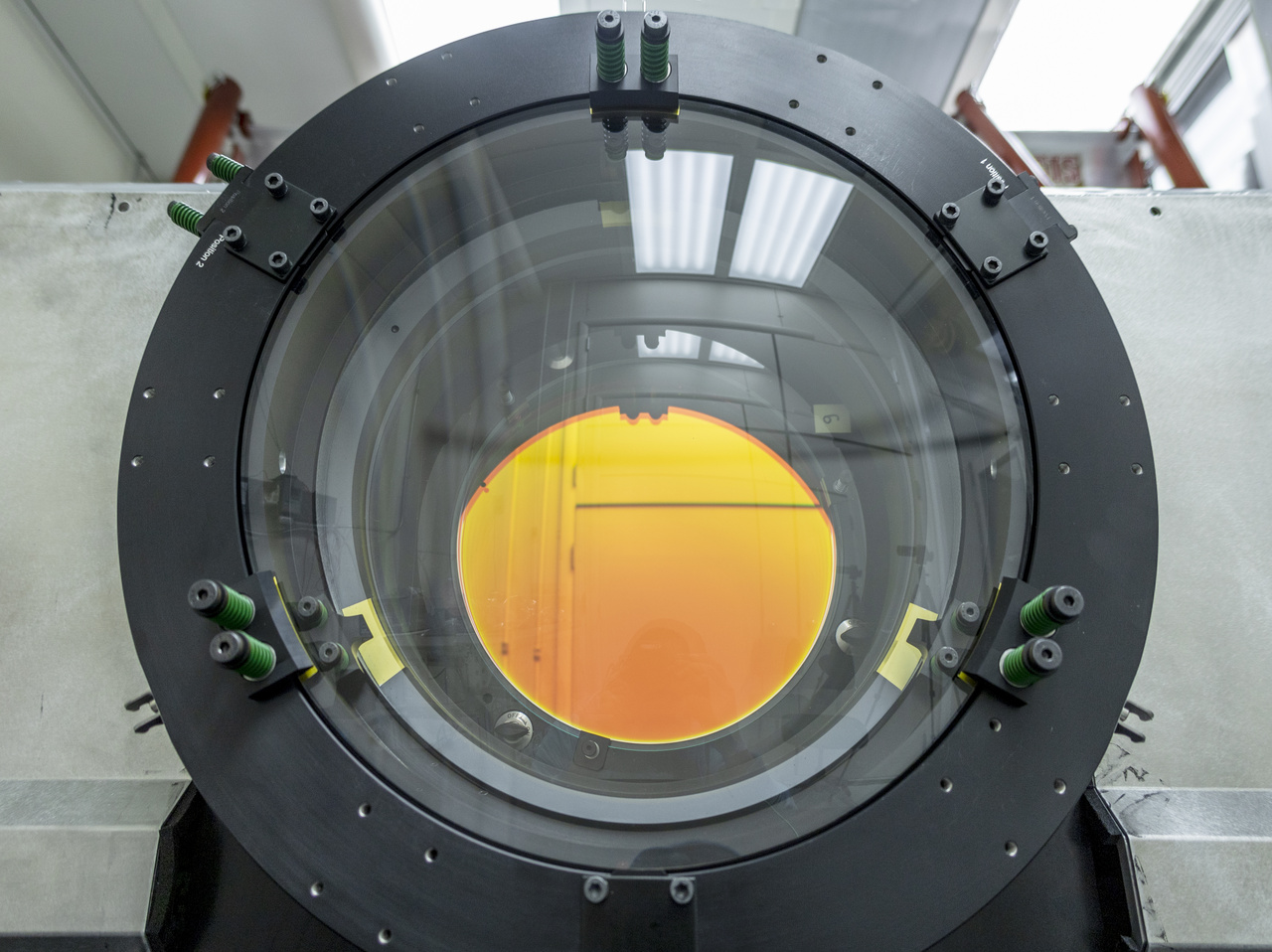February 6, 2020 - The Commissioning Camera for the Vera C. Rubin Observatory is still in the lab at the Rubin Observatory Project Office in Tucson, AZ, where it arrived in June 2019. But it won't be there much longer; it’s undergoing a near-final phase of testing before being packed for shipping to Chile (currently scheduled for late February). The Commissioning Camera, or ComCam, is a much smaller version of the Rubin Observatory LSST Camera (LSSTCam) with about 1/20 of the collecting area that will be used to test the different systems that will interact with the full science camera during Rubin Observatory Operations.
 Electro-optical testing of ComCam was conducted in the fall of 2019, and now software testing is underway. In mid-January, 2020, the ComCam optical system was successfully integrated with the “quad box,” which contains the utilities necessary to operate the camera. An additional set of utilities, currently at SLAC National Accelerator Laboratory, will be added once the instrument is in Chile. This will constitute the “Refrigeration Pathfinder, which will allow ComCam to condition and demonstrate the custom-made refrigeration system on the telescope before LSSTCam is installed. Next, the structure will be integrated with a mass simulator, which is currently being fabricated in the instrumentation shop at the Rubin Observatory Project Office in Tucson. The mass simulator will allow ComCam to be mechanically integrated with the telescope and used for testing on Cerro Pachón.
Electro-optical testing of ComCam was conducted in the fall of 2019, and now software testing is underway. In mid-January, 2020, the ComCam optical system was successfully integrated with the “quad box,” which contains the utilities necessary to operate the camera. An additional set of utilities, currently at SLAC National Accelerator Laboratory, will be added once the instrument is in Chile. This will constitute the “Refrigeration Pathfinder, which will allow ComCam to condition and demonstrate the custom-made refrigeration system on the telescope before LSSTCam is installed. Next, the structure will be integrated with a mass simulator, which is currently being fabricated in the instrumentation shop at the Rubin Observatory Project Office in Tucson. The mass simulator will allow ComCam to be mechanically integrated with the telescope and used for testing on Cerro Pachón.
The final milestone that must be achieved before the camera is readied for shipping is a full execution of the hardware and software interface system—basically a rehearsal of every step involved in producing an image with ComCam on sky. From the control software that allows for coordinated operation of the camera, to the pipelines that read out the camera data and send it to the National Center for Supercomputing Applications (NCSA) in Illinois for processing; the whole procedure must be tested and verified in Tucson before the camera is packed for shipping. The mass simulator will go to Chile by ship, but the more delicate pieces will travel by air. They will be accompanied by sensors that monitor environmental factors like temperature, humidity, and motion, and the data collected will be used to plan the shipment of LSSTCam from SLAC to Chile in 2021.
Watch this space—we plan to share one of the first images produced by ComCam before the camera ships. It won’t be an image of the sky, but it will show that the camera is ready for action!



